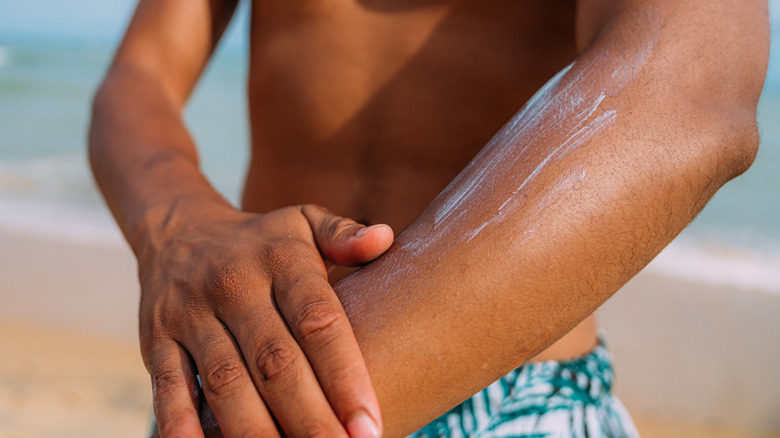What Experts Want Gen Z To Know About Sun Safety
It can be tempting to want a summery glow, but being aware of the risks of skin damage is important for staying safe in the sun. While protecting against the sun's rays might seem like common knowledge, a new survey shows that Gen Z may be under-educated on the dangers of sun exposure.
Tanning, as it turns out, is actually the result of DNA injury to your skin, according to the Skin Cancer Foundation. When we're exposed to ultraviolet (UV) rays, from either the sun or tanning beds, the skin produces melanin to increase pigmentation in the skin to try and protect against further damage. But unfortunately, from our very first tan, the damage is already accumulating.
Tanning increases your risk of skin cancer, which one in five Americans will develop before the age of 70. Indoor tanning is also dangerous, as just one session before the age of 35 gives you a 75% increased risk of developing melanoma. Watch out for sunburns, too. If you have a history of just five sunburns in your lifetime, your risk of developing melanoma doubles, per the Skin Cancer Foundation.
How Gen Z is unaware and how to stay safe
The American Academy of Dermatology Association (AAD) sought to understand Gen Z's beliefs about sun safety with a new survey of 1,000 adults aged 18 to 25 (via U.S. News & World Report). And the survey showed huge gaps in knowledge about the dangers of sun exposure.
It revealed that 60% of respondents had gotten a tan in 2021, 38% thought that tanning was safe as long as they didn't burn, and 27% thought a base tan would actually decrease the risk of skin cancer. Additionally, 49% didn't know you could get sunburned on a cloudy day and 37% didn't know that UV rays could reach you through clothing. The AAD didn't disclose the race or gender of the respondents.
All of these myths can contribute to the risk of skin cancer. The Centers for Disease Control and Prevention (CDC) recommends practicing sun safety by staying in the shade, avoiding indoor tanning, using sunscreen with a sun protection factor (SPF) of 15 or higher, wearing a wide brim hat, and wearing sunglasses that protect against both UVA and UVB rays. UV rays can reach you any day of the year, sunny or cloudy, so be sure to always take appropriate precautions. Your skin will thank you.


